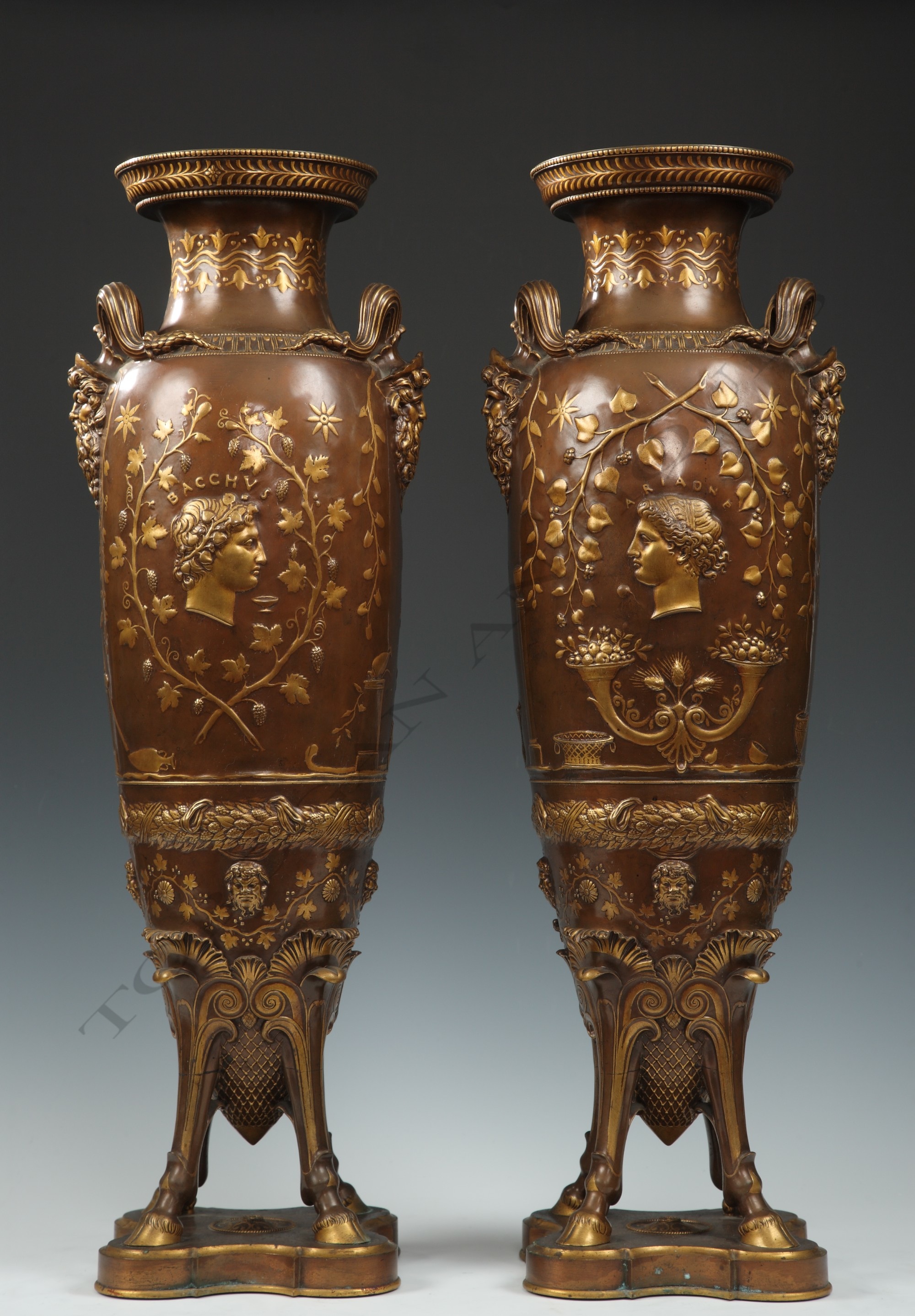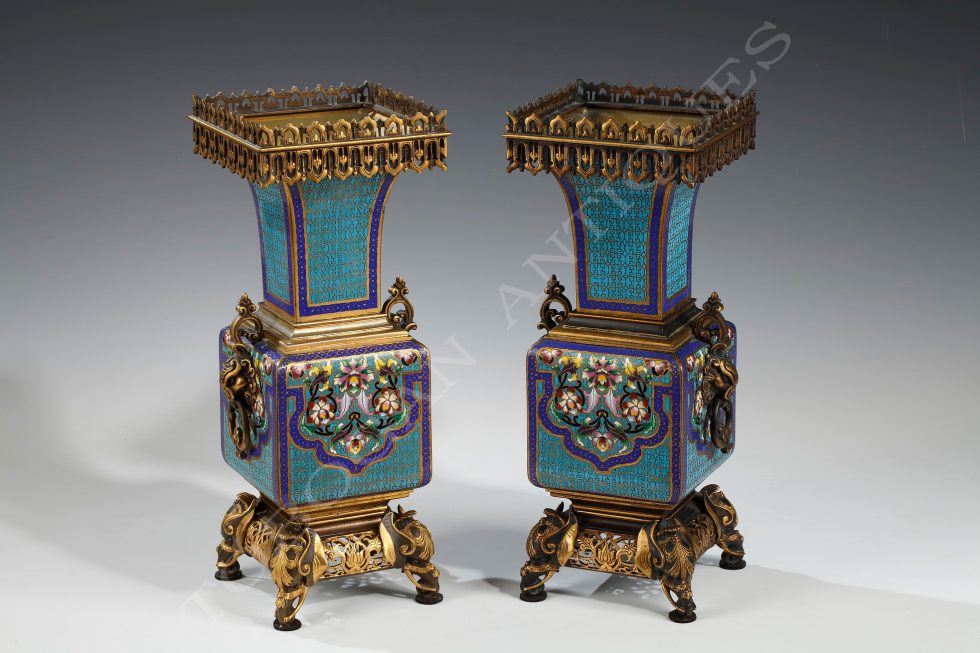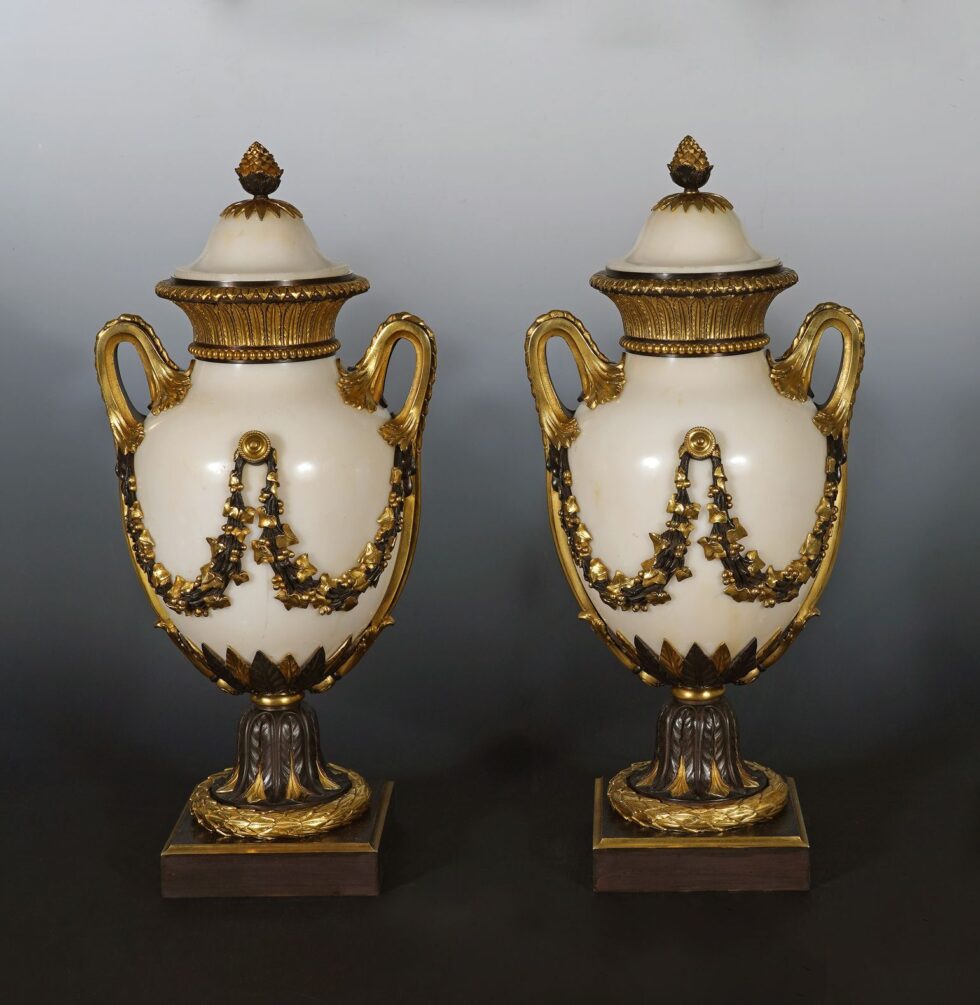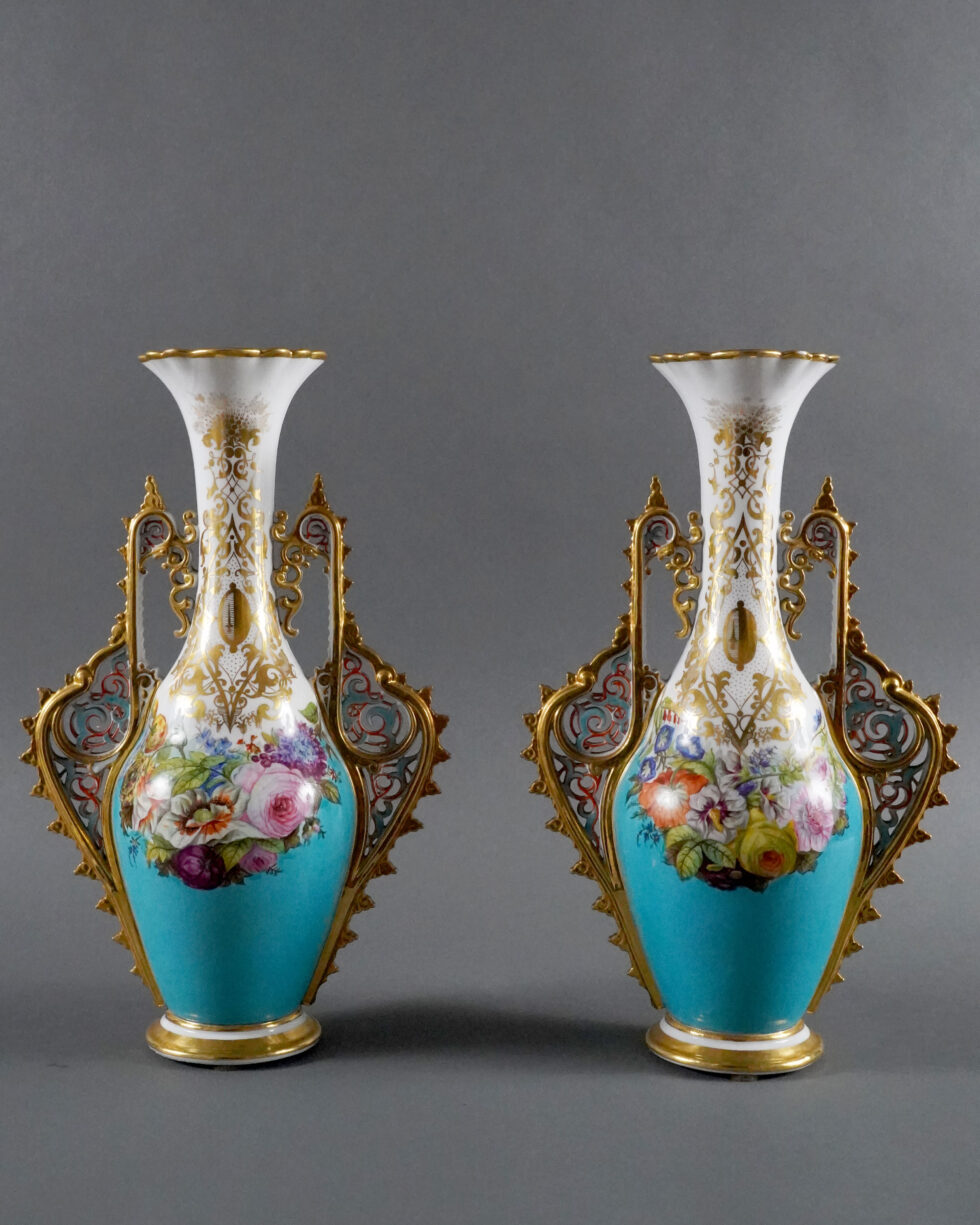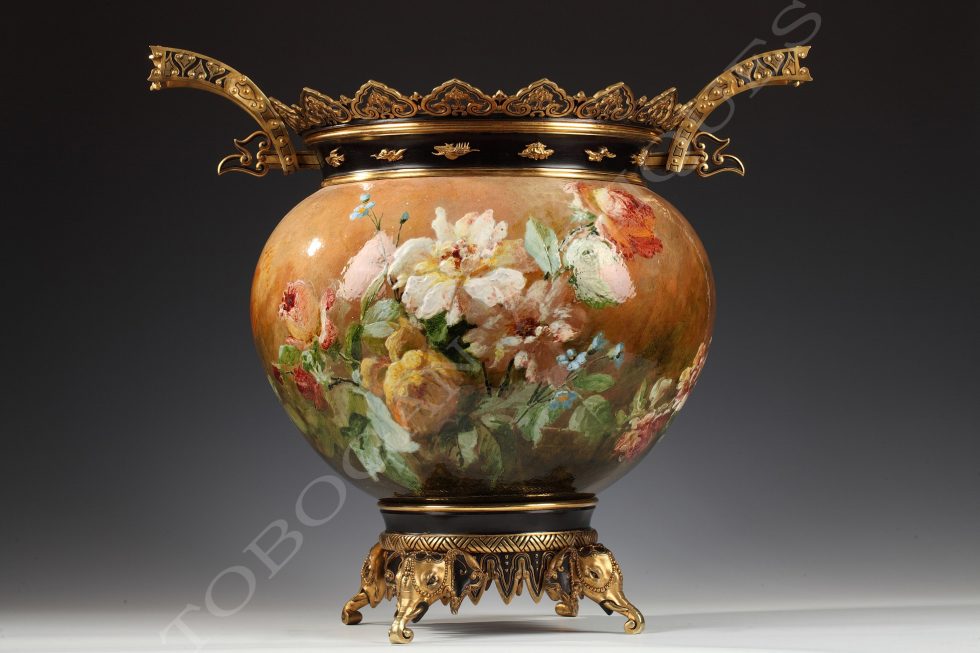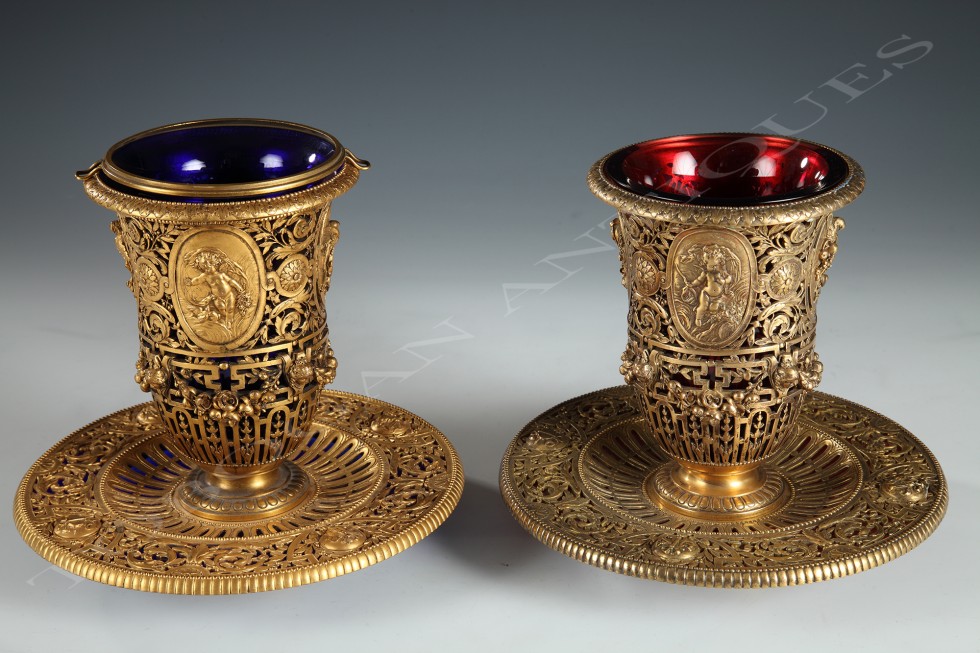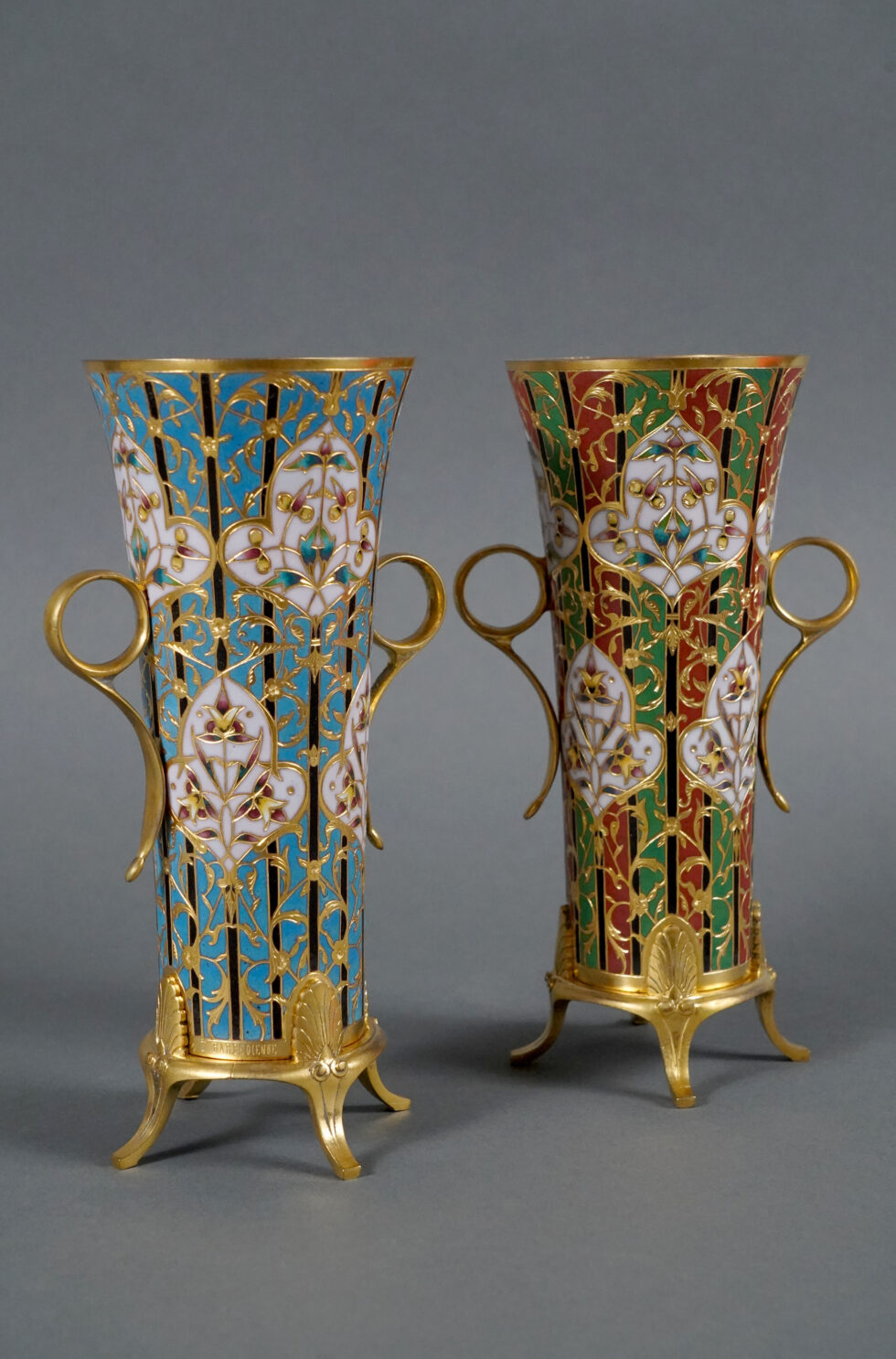ref. 501/0
F. Levillain
Sculptor
(1837-1905)
F. Barbedienne
Bronze-caster
(1810-1892)
Pair of neo-Greek amphoras vases
Signed F. Levillain sculpteur and F. Barbedienne
France
Circa 1890
Height : 68 cm (26,7 in.) ; Diameter : 21 cm (8,2 in.)
Pair of Greek style vases made two patina bronze. Each, designed in the shape of a amphora resting on four hoof feet and a quadrilobed base, is decorated in low-relief with ancient times scenes of grape harvest and picking hops. Overleaf vases, profiles of gods Ariadne and Bacchus are ornated with grape vines and cornucopias. The handles are supported by two bearded heads of gods.
Here is the model titled Amphore vendangeurs, modèle n°1 (68 cm), edited by Barbedienne after 1891. We find it in the catalogs until 1911. The figure of Bacchus is a subject dear to Ferdinand Levillain, which he exhibited bronze medallions in his first exposition as well as Universal Exhibitions in which he participated.
Biography
Ferdinand Levillain (Paris, 1837-1905) studied under the sculptor Jouffroy (1806-1882), before making his debut in 1861 at the French Artists Salon where he continued to exhibit until 1903. At the 1867 Universal Exhibition in Paris, he was praised for a Neo-Greek style bronze cup he made for the firm Blot and Drouard. He was not to become really famous, however, until 1871 thanks to his association with the great bronze founder Ferdinand Barbedienne, who began to exhibit Neo-Greek style lamps, cups, vases and candelabras on his stands. Levillain was overwhelmingly triumphant at the 1878 Universal Exhibition in Paris, where he was unanimously awarded the gold medal for his creations in the Classical style. The famous bronze caster Servant (1828-c.1890) declared in the report of the jury for Artistic Bronzes that the work of Levillain « chased like the finest jewels » and « so diverse and pure of form (…) are of the highest degree of perfection ». After receiving a first class medal at the 1884 Salon for a cup entitled « The Elements, the Months and the Seasons », Ferdinand Levillain went on to win a silver medal at the 1889 Universal Exhibition in Paris.
Born in 1810, Ferdinand Barbedienne started one of the most famous 19th century artistic bronze casting companies. He died in 1892. In addition to his personal production, he worked for famous artists such as Clésinger, Carrière-Belleuse and Guillemin. Barbedienne’s production was always highly esteemed and he was, himself admired by contemporary art critics who compared him during the 1878 Universal Exhibition to a « prince of industry and the king of bronze-casting ». In the catalogue of the Exhibition, Barbedienne was considered as the leader among 19th century bronze casters, because of the exquisit quality of his bronzes.
Levillain’s works in connection
Plaster relief Vendangeurs, Salon of 1877 (n°3966) ; Plaster relief La cueillette du Houblon, Salon of 1878 (n°4411).
Bibliography
F. Barbedienne éditeur, G. Leblanc-Barbedienne successeurs, Bronzes et objets d’art, Paris, 1911, p.79.
Stanislas Lami, Dictionnaire des sculpteurs de l’école française au XIXe siècle, t.III, Paris, 1919, Kraus reprint, 1970, p. 348.
Contact us
Tobogan Newsletter
If you want to be up-to-date with our new acquirings you can sign up to our newsletter.

